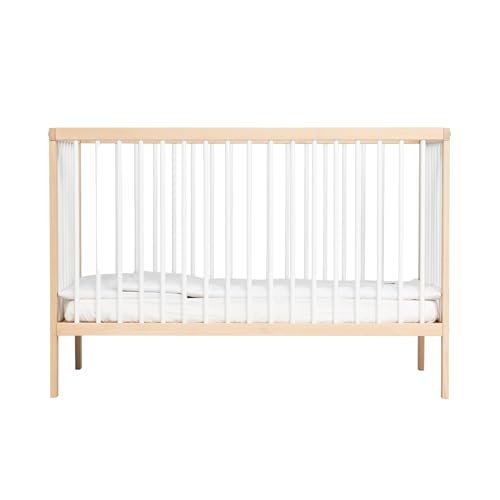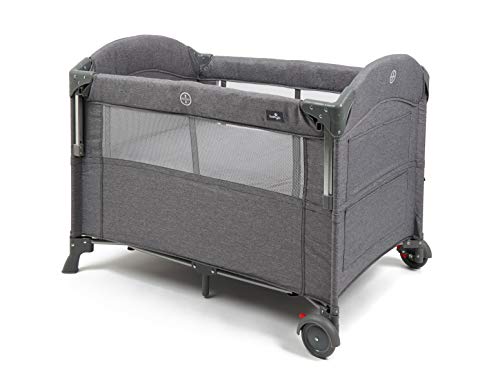
Cots And Tots
Overview
-
Sectors Media
-
Posted Jobs 0
-
Viewed 90
Company Description
A Look At The Future What’s In The Pipeline? Newborn Cot Industry Look Like In 10 Years?
The Essential Guide to Choosing the Right Newborn Cot
When it concerns inviting a brand-new member into the family, ensuring a safe and comfy sleeping environment is critical. A necessary product in any nursery is the newborn cot. With a myriad of alternatives offered on the market, choosing the ideal cot can be an overwhelming job for brand-new moms and dads. This post intends to provide a helpful introduction of the elements to consider when choosing a newborn cot, in addition to the numerous types available and best practices for cot safety.
The Importance of a Newborn Cot
A newborn cot acts as a designated sleeping location for babies, promoting better sleep patterns and making sure safety during those tender early months. Not only does a well-chosen cot supply security, www.cots4tots.co.Uk but it also adds to the total well-being of the child as they shift from infancy to toddlerhood.
Key Considerations When Choosing a Cot
When choosing a newborn cot, numerous factors require to be thought about to make sure that it will appropriate for both the infant’s needs and the moms and dads’ preferences.
| Factor | Description |
|---|---|
| Security Standards | Check that the cot abides by security regulations set by pertinent authorities. |
| Product | Make sure that the cot is made from non-toxic and durable products. |
| Size | Verify that the cot fits within the space available in the nursery and enables for growth. |
| Adjustable Mattress Heights | Choose for cots with adjustable mattress heights to accommodate the baby’s growth. |
| Maneuverability | Select a cot which is simple to move, particularly if it need to be transferred for cleaning. |
| Design and Aesthetics | Choose a cot that complements the general nursery style and fits parents’ style preferences. |
| Budget plan | Consider the price range and make sure that the cot offers value for the cost. |
Types of Newborn Cots
Parents can select from a number of kinds of cots, each with its own functions and advantages. Below are a few of the most typical kinds of newborn cots:
-
Standard Cots:
- Traditional, sturdy style
- Typically, adjustable mattress heights
- Suitable for longer-term use
-
Convertible Cots:
- Can be transformed into a young child bed or daybed
- Extended use as the child grows
- Frequently features additional security features
-
Cradle or Bassinet:
- Smaller, portable sleeping options for babies
- Normally used for the first couple of months
- Light-weight and simple to walk around the house
-
Co-Sleepers:
- Designed to connect firmly to the parents’ bed
- Helps with breastfeeding throughout the night
- Keeps the newborn close while preserving different sleeping areas
-
Travel Cots:
- Lightweight, portable, and simple to set up
- Perfect for getaways or trips
- Normally featured collapsible designs for storage
Best Practices for Cot Safety
Security ought to be the top concern when using a newborn cot. Following the following standards can develop a secure sleeping environment for the infant:

- Follow Manufacturer Instructions: Always assemble the cot according to the producer’s guidelines to make sure stability and safety.
- Utilize the Right Mattress: The bed mattress needs to fit snugly in the cot with no gaps. It should be firm to reduce the risk of suffocation.
- Prevent Soft Bedding: Keep the sleeping area complimentary from soft items, including pillows, blankets, and toys that can position a suffocation risk.
- Examine Condition Regularly: Regularly examine the cot for any loose or damaged parts, and ensure that the security features are operating properly.
- Positioning: Place the cot away from windows, blinds, and cables to prevent threats such as entanglement or falls.
Regularly Asked Questions (FAQs)
-
At what age can I transition my baby from a bassinet to a cot?
- Usually, infants can transition to a cot when they start to reveal indications of rolling over or when they outgrow their bassinet, usually around 4-6 months.
-
How can I make sure the cot is safe for my newborn?

- Always pick a cot that fulfills existing safety requirements, assemble it correctly, and frequently check it for any wear or tear.
-
What is the perfect bed mattress firmness for a newborn?
- A firm bed mattress is advised as it lowers the danger of suffocation and Sudden Infant Death Syndrome (SIDS), promoting more secure sleep.
-
How high should the cot mattress be set?
- The bed mattress must be at the greatest position for babies for easy access and lower as the baby grows and ends up being more mobile.
-
Is it necessary to add a bumper pad to the cot?
- No, bumper pads are not recommended as they can present a suffocation or strangulation danger. It’s best to keep the cot without extra bedding.
Picking the right newborn cot is a significant choice that can influence the safety and convenience of an infant’s sleeping environment. By thinking about elements such as cot type, safety standards, bed mattress firmness, and proper cot practices, moms and dads can make informed choices that add to a tranquil sleeping experience for their newborn. By focusing on safety and comfort, parents can produce a nurturing space that supports their kid’s growth and wellness from the very start.
In conclusion, newbie moms and dads need to equip themselves with understanding about newborn cots and make thoughtful choices that will serve both their infant and themselves in this stressful yet fulfilling journey of being a parent.
